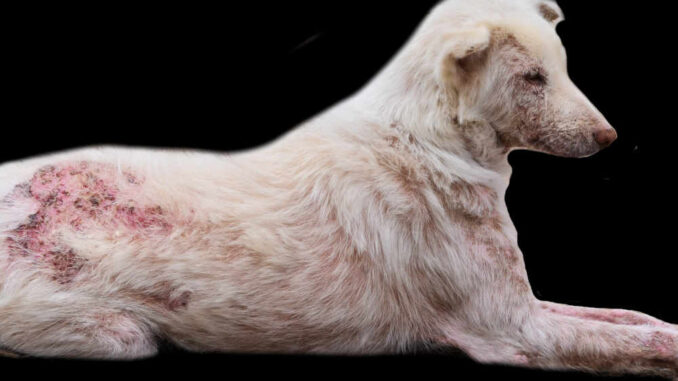
This article was updated on August 26th, 2023
Mange can be a frustrating skin disease that can cause extreme discomfort in our canine companions. Either form (Sacoptic or Demodectic) can lead to hair loss, itching, and secondary skin infections. More alarmingly, sarcoptic mange is transmissible to humans, so early identification is key to eliminating the disease.
First, we will talk about the two different types of mange:
1. Scabies, or Sarcoptes scabiei: isa type of parasitic mite that leads to the disease called sarcoptic mange. Sarcoptic mange causes significant clinical signs and is very contagious in dogs and humans. These mites are extremely small in size and unable to be visualized without a microscope. They are transmitted through close contact with other dogs or animals that are infected with the parasite. View pictures of dog scabies.
2. Demodex: is a type of parasitic mite that leads to the disease called demodectic mange. Demodectic mange is caused by mites that are native to the skin and live within the hair follicles. In young puppies or immunocompromised animals, the mites can quickly overgrow and cause skin disease. This type of mite is not contagious to humans or other animals. View pictures of dog mites.
Early stage mange: What mange in dogs looks like in the early days
The first clinical signs include:
1. Hair Loss: As the mites damage the skin and hair follicles, owners will notice patches of hair loss. Sarcoptic mange will affect areas where hair is thinner, such as the ears, legs, and abdomen. With demodectic mange, hair loss is usually in patches on the face and around the eyes. Either mite can cause diffuse hair loss all over the body.
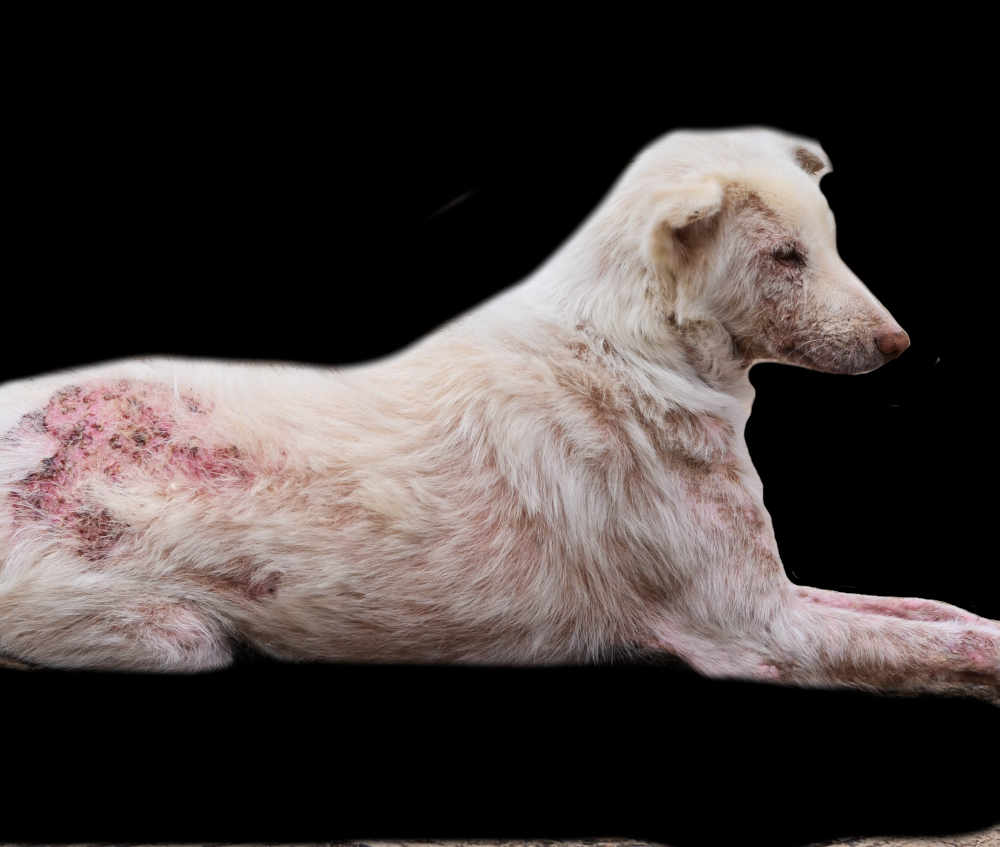
2. Excessive Itching: Severe itchiness is more characteristic of sarcoptic mange than demodectic mange. This is because the mite causes an allergic skin reaction leading to intense itchiness. Dogs with scabies often cannot be distracted from itching and are extremely uncomfortable. Dogs with demodectic mange may be mildly itchy but not as profoundly as those with sarcoptic mange.
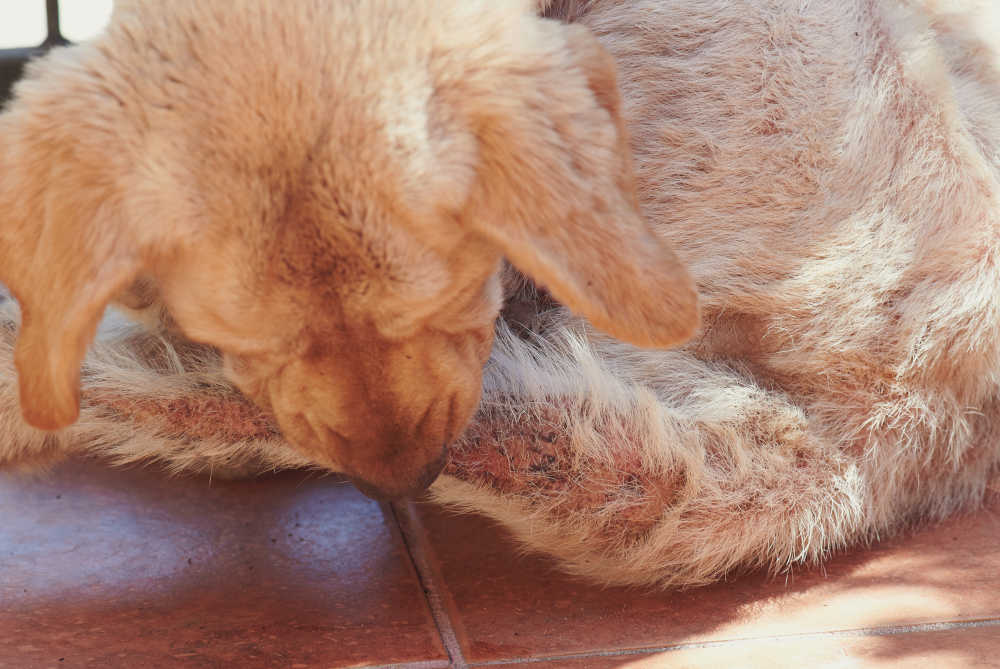
3. Pus, Discharge, Crusts, Scales: While both conditions can cause crusts and scales on the skin, pus and discharge may be signs of a more significant issue. When discharge develops, this may be indicative that a secondary bacterial or yeast infection has taken hold of the damaged skin. Dogs may have a foul odor to their skin with secondary infections.
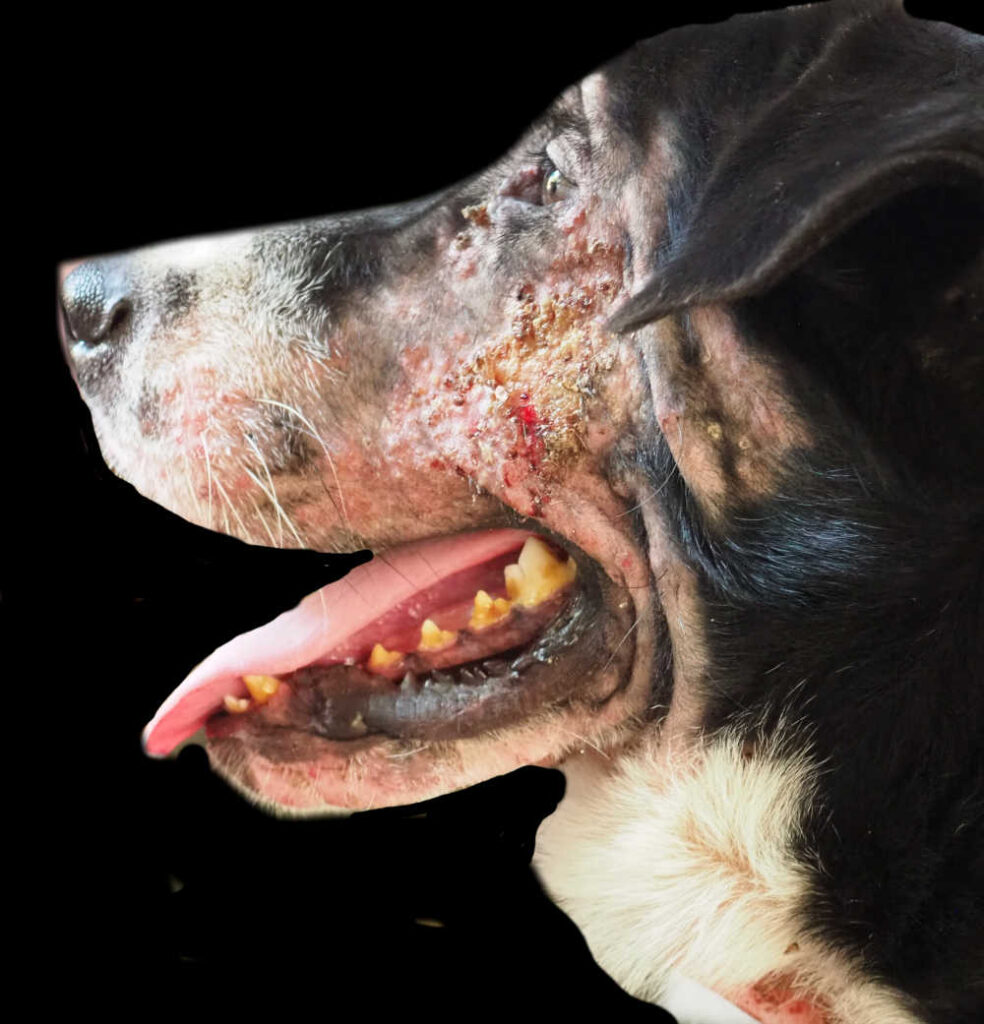
Importance of early detection of mange
Early detection of sarcoptic or demodectic mange will lead to a quicker diagnosis, treatment, and relief for your pet. Catching sarcoptic mange early will hopefully allow owners to begin to address the infection and clean their home, preventing transmission to humans or other dogs in close contact. By waiting to begin treatment for mange, dogs may become more susceptible to secondary skin infections.
How fast does mange progress in dogs?
Clinical signs of sarcoptic mange typically appear 10 days to 8 weeks after exposure to an infected animal. The first signs of this condition will be hair loss on the ear margins and elbows. Once the infection starts, it can quickly progress over days to weeks leading from localized infection to diffuse hair loss and red, thickened skin.
Demodectic mange may start more subtly with localized hair loss and red skin. This disease can be self-limiting and not progress beyond minor hair loss. In cases of generalized demodectic mange, dogs will have red skin and hair loss of their entire bodies. Secondary infections may take hold. This disease is also progressive over days to weeks. Many young animals will recover without any treatment as their immune systems mature. It will usually take anywhere from 1-3 months for mild infections to spontaneously improve.
Causes of mange in dogs: how does it start?
Sarcoptic mange is an infectious parasite that is transmitted through close contact with another affected dog or wildlife. It is highly contagious so animals with this condition must be isolated.
Demodectic mange is caused by a mite that is part of the normal skin flora that causes infection in young puppies or immunocompromised animals. A healthy immune system will keep these mites at bay, but dogs with an immature immune system or those who are immunocompromised cannot control the number of mites reproducing – leading to overgrowth and infection.
Signs that your dog needs veterinary help with mange
If you have a dog at home that is incredibly itchy to the point of traumatizing its skin, you should call a veterinarian. Scabies is not only a disease that causes extreme discomfort, but it also is highly contagious to other dogs and people. Swift diagnosis will allow early treatment and the ability to have your dog feeling better ASAP.
Calling a veterinarian is especially important if your dog appears systemically unwell (lethargic or not eating) or if you suspect a secondary skin infection.
What could early signs of mange be confused with?
Other diseases can mimic clinical signs of mange in dogs and may present in similar ways. We created a list of diseases that can also cause hair loss, itching, and red skin:
- Food or environmental allergies
- Bacterial or yeast infections
- Ringworm
- Contact dermatitis
- Flea allergy dermatitis
- Cutaneous lymphoma
Veterinarian diagnosis
Diagnosis of mites does require a trip to a veterinarian. Skin scraping and microscopic evaluation of the debris will determine if mites are present or not, and which species is present. Confirmation that the mite is present is very important before starting any treatment. Otherwise, we may treat dogs wrongfully and cause the underlying disease to become worse.
What you can do to help your dog
- Isolate your dog – Forms of mange, like scabies, are incredibly contagious, so it is best to isolate them from people and other dogs to prevent disease transmission.
- Cleaning the environment – Clean the bedding and any furniture your dog comes in contact with with a high-heat wash.
- Bathing – Bathe your dog with soothing anti-itch shampoos while treatment takes effect. This will alleviate some of the discomfort of skin irritation.
- Dog clothes – Putting a t-shirt or sweater on your dog will help prevent them from scratching and damaging the skin. Change the clothing out daily and wash on high heat.
- E-collar – Dogs that are licking and chewing must wear a cone to prevent trauma to the skin.
Are there dogs or breeds that are more likely to get mange?
Demodectic mange can be hereditary in dogs. The following breeds are more commonly affected:
- Dalmatians
- American Pitbull Terriers
- American Bulldogs
- Boston Terrier
- Boxer
- Old English Sheepdog
- Shar-pei
There is not a clear breed predilection for scabies though Labradors, Cocker Spaniels, and Doberman Pinschers may be more predisposed in Noth America.
Related posts about mange:
Related posts about scabies (sarcoptic mange):
Disclaimer: This website's content is not a substitute for veterinary care. Always consult with your veterinarian for healthcare decisions. Read More.




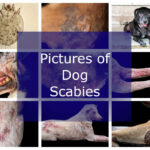
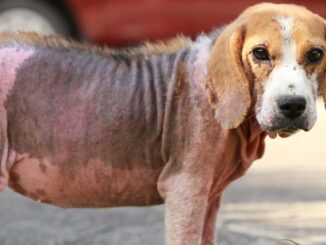
Be the first to comment